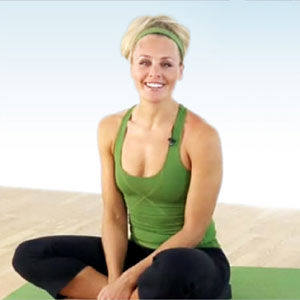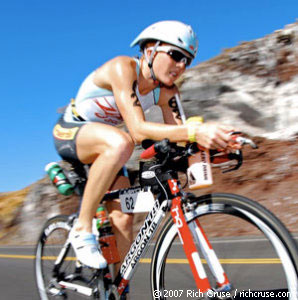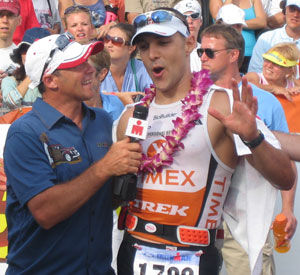Can Yoga Help My Race?

Editor’s note: An advertiser—mypypeline.com—ran four ads in one campaign last month offering training DVDs. Three were on topics that triathletes would consider mainstream; the fourth was Yoga for Triathletes. Privately, I didn’t hold out much hope for that one. When I ran reports, the “click-thru” rate for that ad equaled the other three ads combined. Obviously I had a blind spot, and I asked the narrator of that DVD to pen us an intro to yoga for those in our sport, which follows below:
My initial reaction yoga classes was—from the perspective of an athlete—a waste of time. I was already busy with endurance training, strength training, diet, and there was neither the time nor the need for yoga. I no longer hold to that view; let me tell you why. First, some background.
Yoga consists of three components: Asana (stretching and strengthening postures); Pranayama (breath work); and Pratyahara (meditation). I host and narrate a DVD called Yoga for Triathletes. The physical postures (Asana) used in the DVD focus on isometric (static) postures that build muscular endurance and joint stability; as well as extensor postures that open and stretch the front of the body. The yoga postures that are included in the video challenge the legs, core and arms so much that such a session could integrate into your strength building training routines.
We also work on postures that help build the muscles around the knee and ankle, which promote stable, strong joints, and increase synovial fluid to lubricate those joints. Another benefit of the Asana portion of the yoga practice is the opportunity to stretch all of the major muscles groups used in all three of triathlon’s events. We focus primarily on opening the deltoids, pectorals, hip flexors, hamstrings, calves, and look to build strength in the lower back, core, quads and arms.
Anyone willing to compete in events longer than three hours will not get by on strength alone. The second part of the yoga practice is Pranayama (breath control). We use different breathing techniques to learn how to lengthen and strengthen the breath; control the breath; and how to create more volume in the breath. Like any other muscle, the diaphragm needs to be trained and—like any other muscle—it responds to training. The yoga practice can get quite challenging on a physical level, but because the practice teaches you to connect breath to movement and mind to body, when physical exertion happens the body knows how to breathe and stay in control. It knows which muscles need to be used and which to relax, because this has been practiced on a daily basis.
This principle alone could make a difference in your race. When your muscles fatigue and you feel near the end of your endurance, you’ve trained the body to stay calm and relaxed, to use only what is needed, and to control your ventilation.
The physical part of the practice also stretches and opens up the thoracic cavity, giving us more space to breath. By working in extension we open through the front of the entire body and more specifically the intercostal muscles in the ribcage which, in turn, facilitates breathing and breath work.

From whence my own evolution from I don’t need yoga to my current yoga advocacy? My background included competitive athletics, and the collegiate study of creative arts (musical theatre). My introduction to yoga was to rehab an injured shoulder that was affecting both these disciplines. At first, I was only aware of the physical benefits of the practice, but 8 years later I have come to realize that yoga keeps me, my family, my relationships, and my attitude balanced. I studied and completed my ISHTA training in Tokyo, Japan. ISHTA Yoga embraces elements from a variety of styles and seeks to help its students discover the exact blend of postures, breathing and meditation techniques necessary to bring out their full potential.
The final piece to the Yoga Practice is Pratayhara (meditation); more specifically the withdrawal of senses. After hours of physical exertion and fatigue, we might need something more than just physical attributes to get us to the finish line. In yoga, we use the physical part of the practice to realign the body and the spine so the body can function at an optimal level; and to be strong and able to support sitting in mediation. It is in mediation that we dissociate ourselves from our senses, and experience a different level of consciousness. Have you ever endured in a race you thought you had no chance of finishing? Perhaps your will propelled your body past its nominal physical limit. Yoga promotes and teaches precisely this dynamic.
Like any technical sport, the first time you practice yoga you may feel uncoordinated and it may seem unnatural. But like any technical sport, the more you do it, the easier it becomes, and the principals described above will start to resonate.
Jana’s Yoga for Triathlon video can be found at MyPypeline.com




Start the discussion at slowtwitch.northend.network